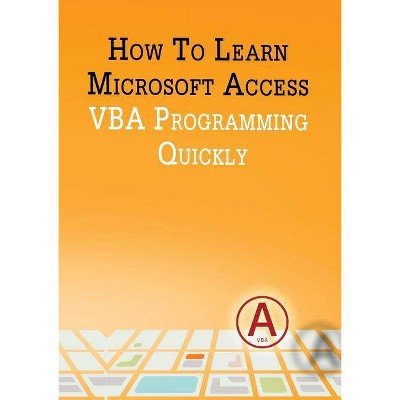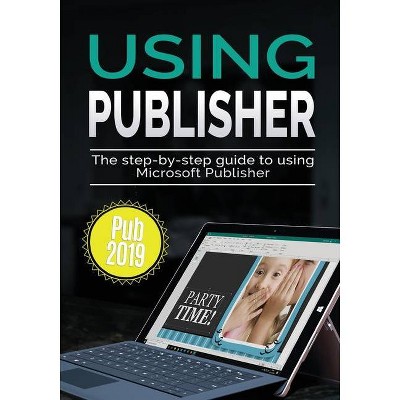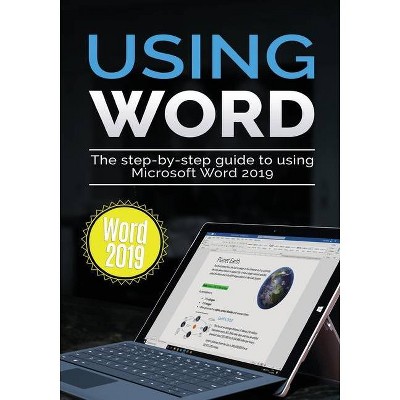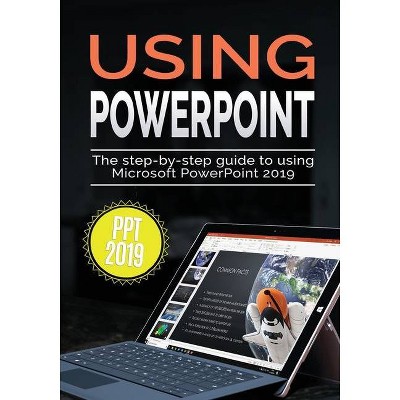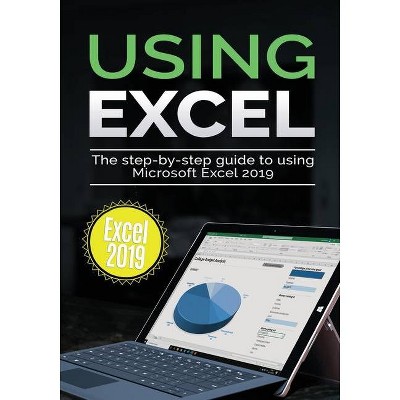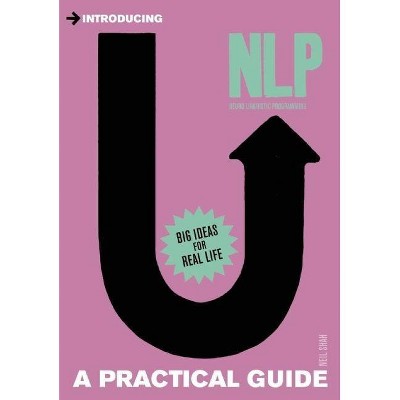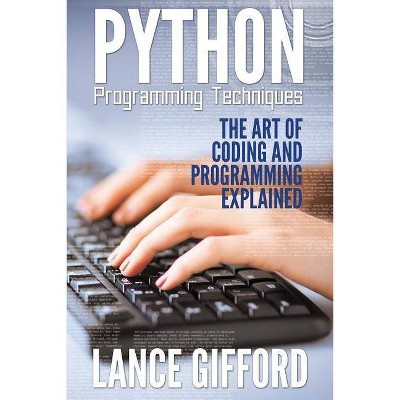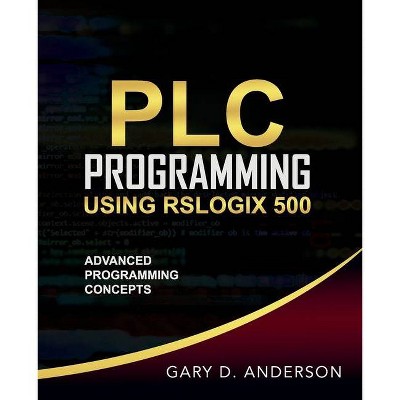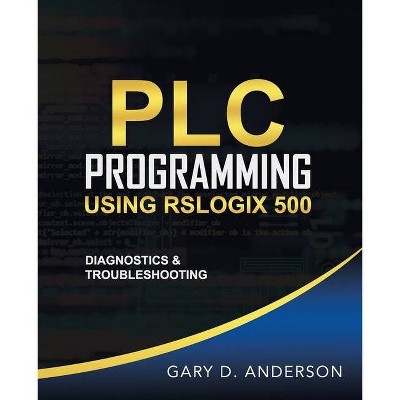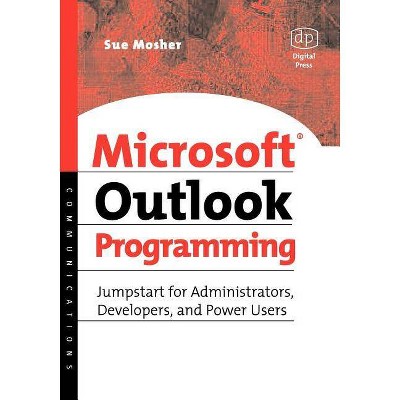Introducing Microsoft Access Using Macro Programming Techniques - by Flavio Morgado (Paperback)
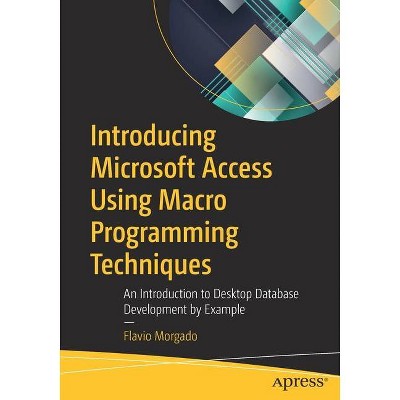
Similar Products
Products of same category from the store
AllProduct info
<p/><br></br><p><b> About the Book </b></p></br></br>Learn Microsoft Access by building a powerful database application from start to finish. Microsoft Access ships with every version of Office, from Office 2019 to Office 365 Home and Personal editions. Most people understand the value of having a reliable contact database, but few realize that Access can be an incredibly valuable data tool and an excellent gateway for learning database development. Introducing Microsoft Access Using Macro Programming Techniques approaches database development from a practical and experiential standpoint. You will learn important data concepts as you journey through each step of creating a database using Access. The example you will build takes advantage of a massive amount of data from an external source of nutritional data (USDA). You will leverage this freely available repository of information in multiple ways, putting Access to the test in creating powerful business solutions that you can then apply to your own data sets. The tables and records in this database will be used to demonstrate key relational principles in Access, including how to use the relationship window to understand the relationships between tables and how to create different objects such as queries, forms, reports, and macros. Using this approach, you will learn how desktop database development can be a powerful solution to meet your business needs. What You Will Learn Discover the relational database and how it is different from other databases Create database tables and establish relationships between them to create a solid relational database system Understand the concept and importance of referential integrity (RI) in data and databases Use different types of Access queries to extract the information you need from the database Show database information in individual, customized windows using Access Forms Present insightful information about the database using Access Reports Automate your database solutions with macros This book is for anyone who wants to learn how to build a database using Microsoft Access to create customized solutions. It is also useful for those working in IT managing large contact data sets (healthcare, retail, etc.) who need to learn the basics in order to create a professional database solution. Readers should have access to some version of Microsoft Access in order to perform the exercises in this book.<p/><br></br><p><b> Book Synopsis </b></p></br></br>Learn Microsoft Access by building a powerful database application from start to finish.<p>Microsoft Access ships with every version of Office, from Office 2019 to Office 365 Home and Personal editions. Most people understand the value of having a reliable contact database, but few realize that Access can be an incredibly valuable data tool and an excellent gateway for learning database development.</p> <p><b><i>Introducing Microsoft Access Using Macro Programming Techniques</i></b> approaches database development from a practical and experiential standpoint. You will learn important data concepts as you journey through each step of creating a database using Access. The example you will build takes advantage of a massive amount of data from an external source of nutritional data (USDA). You will leverage this freely available repository of information in multiple ways, putting Access to the test in creating powerful business solutions that you can then apply to your own data sets. The tables and records in this database will be used to demonstrate key relational principles in Access, including how to use the relationship window to understand the relationships between tables and how to create different objects such as queries, forms, reports, and macros. Using this approach, you will learn how desktop database development can be a powerful solution to meet your business needs.</p><p><br></p> <p><b>What You Will Learn</b></p> <p></p><ul><li>Discover the relational database and how it is different from other databases</li><li>Create database tables and establish relationships between them to create a solid relational database system</li><li>Understand the concept and importance of referential integrity (RI) in data and databases</li><li>Use different types of Access queries to extract the information you need from the database</li><li>Show database information in individual, customized windows using Access Forms</li><li>Present insightful information about the database using Access Reports</li><li>Automate your database solutions with macros</li></ul><p></p> <p><br></p><p><b>Who This Book Is For</b></p> <p>Anyone who wants to learn how to build a database using Microsoft Access to create customized solutions. It is also useful for those working in IT managing large contact data sets (healthcare, retail, etc.) who need to learn the basics in order to create a professional database solution. Readers should have access to some version of Microsoft Access in order to perform the exercises in this book.</p><p/><br></br><p><b> From the Back Cover </b></p></br></br>Learn Microsoft Access by building a powerful database application from start to finish.<p>Microsoft Access ships with every version of Office, from Office 2019 to Office 365 Home and Personal editions. Most people understand the value of having a reliable contact database, but few realize that Access can be an incredibly valuable data tool and an excellent gateway for learning database development.</p><p><i>Introducing Microsoft Access Using Macro Programming Techniques<b> </b></i>approaches database development from a practical and experiential standpoint. You will learn important data concepts as you journey through each step of creating a database using Access. The example you will build takes advantage of a massive amount of data from an external source of nutritional data (USDA). You will leverage this freely available repository of information in multiple ways, putting Access to the test in creating powerful business solutions that you can then apply to your own data sets. The tables and records in this database will be used to demonstrate key relational principles in Access, including how to use the relationship window to understand the relationships between tables and how to create different objects such as queries, forms, reports, and macros. Using this approach, you will learn how desktop database development can be a powerful solution to meet your business needs.</p><p><b>What You Will Learn</b><br></p><p></p><ul><li>Discover the relational database and how it is different from other databases</li><li>Create database tables and establish relationships between them to create a solid relational database system</li><li>Understand the concept and importance of referential integrity (RI) in data and databases</li><li>Use different types of Access queries to extract the information you need from the database<br></li><li>Show database information in individual, customized windows using Access Forms</li><li>Present insightful information about the database using Access Reports</li><li>Automate your database solutions with macros</li></ul><p></p>This book is for anyone who wants to learn how to build a database using Microsoft Access to create customized solutions. It is also useful for those working in IT managing large contact data sets (healthcare, retail, etc.) who need to learn the basics in order to create a professional database solution. Readers should have access to some version of Microsoft Access in order to perform the exercises in this book. <p/><b>Flavio Morgado</b> is a food engineer with an MSc. degree in food science and technology, a VBA professional developer, and a professor of epidemiology, statistics, and medical informatics at UNIFESO, a health sciences university in Rio de Janeiro, Brazil. Flavio has written more than 30 books, including <i>Programming Excel with VBA</i> (Apress) and <i>Microsoft Word Secrets</i> (Apress), and has translated many technical books. He also loves animals and the exquisite nature of the surrounding rainforest, and when he is not teaching, writing, or developing, he can be found running or riding his mountain bike through the Teresopolis Mountains, followed by his eight dogs, or spending time on the stunningly beautiful beaches of Cabo Frio in Rio de Janeiro.<br><p/><br></br><p><b> About the Author </b></p></br></br><b>Flavio Morgado</b> is a food engineer with an MSc. degree in food science and technology, a VBA professional developer, and a professor of epidemiology, statistics, and medical informatics at UNIFESO, a health sciences university in Rio de Janeiro, Brazil. Flavio has written more than 30 books, including <i>Programming Excel with VBA</i> (Apress) and <i>Microsoft Word Secrets</i> (Apress), and has translated many technical books. He also loves animals and the exquisite nature of the surrounding rainforest, and when he is not teaching, writing, or developing, he can be found running or riding his mountain bike through the Teresopolis Mountains, followed by his eight dogs, or spending time on the stunningly beautiful beaches of Cabo Frio in Rio de Janeiro.<br>
Price History
Price Archive shows prices from various stores, lets you see history and find the cheapest. There is no actual sale on the website. For all support, inquiry and suggestion messagescommunication@pricearchive.us
